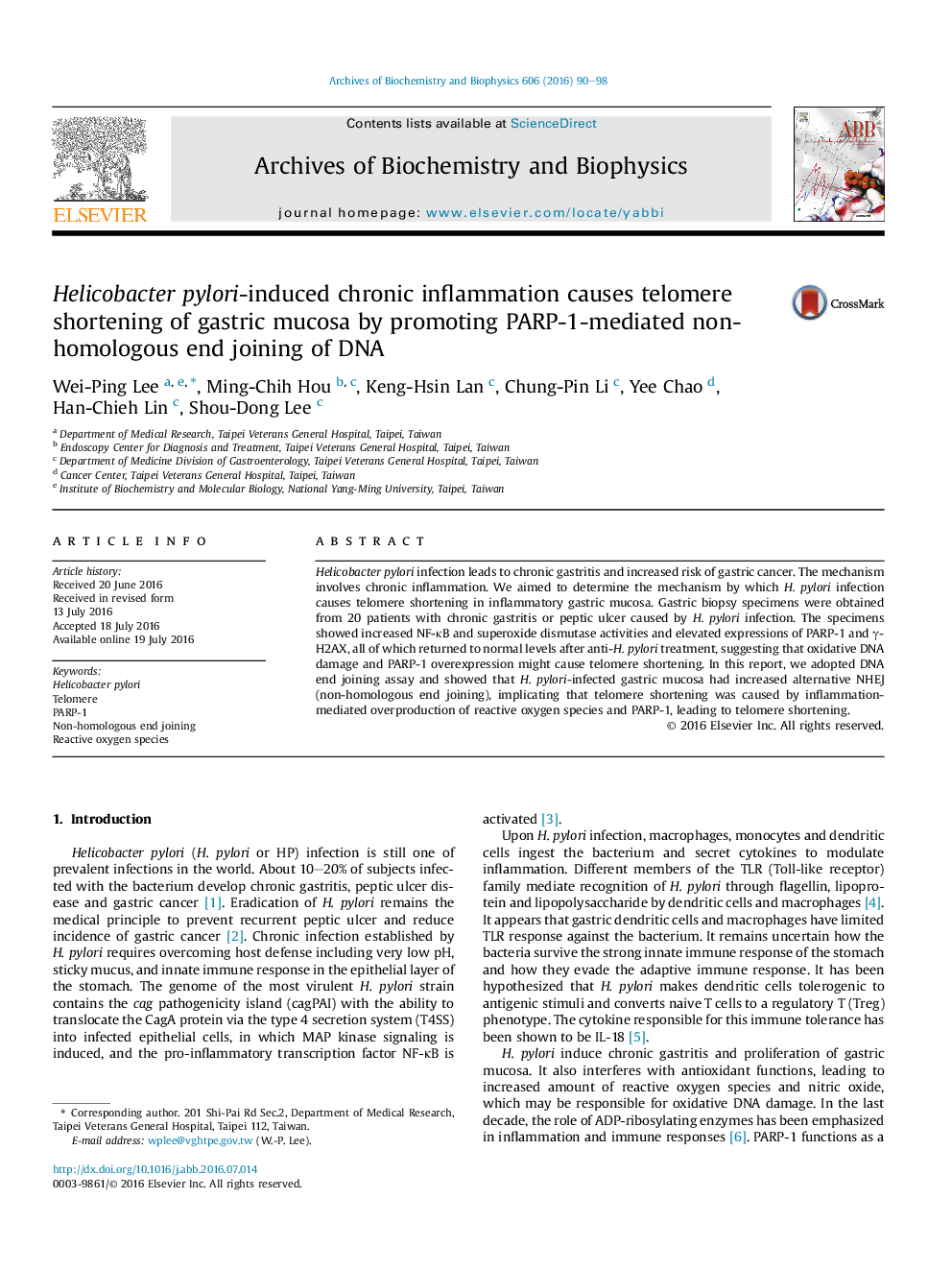| کد مقاله | کد نشریه | سال انتشار | مقاله انگلیسی | نسخه تمام متن |
|---|---|---|---|---|
| 1924702 | 1536297 | 2016 | 9 صفحه PDF | دانلود رایگان |

• Helicobacter pylroi infection causes telomere shortening of gastric mucosa.
• H. pylori infection induces PARP-1 and γ-H2AX in gastric mucosa.
• PARP-1 promotes DNA end joining and telomere shortening.
• Immune-mediated oxidative DNA damage initiates alternative NHEJ of telomeres.
Helicobacter pylori infection leads to chronic gastritis and increased risk of gastric cancer. The mechanism involves chronic inflammation. We aimed to determine the mechanism by which H. pylori infection causes telomere shortening in inflammatory gastric mucosa. Gastric biopsy specimens were obtained from 20 patients with chronic gastritis or peptic ulcer caused by H. pylori infection. The specimens showed increased NF-κB and superoxide dismutase activities and elevated expressions of PARP-1 and γ-H2AX, all of which returned to normal levels after anti-H. pylori treatment, suggesting that oxidative DNA damage and PARP-1 overexpression might cause telomere shortening. In this report, we adopted DNA end joining assay and showed that H. pylori-infected gastric mucosa had increased alternative NHEJ (non-homologous end joining), implicating that telomere shortening was caused by inflammation-mediated overproduction of reactive oxygen species and PARP-1, leading to telomere shortening.
Journal: Archives of Biochemistry and Biophysics - Volume 606, 15 September 2016, Pages 90–98